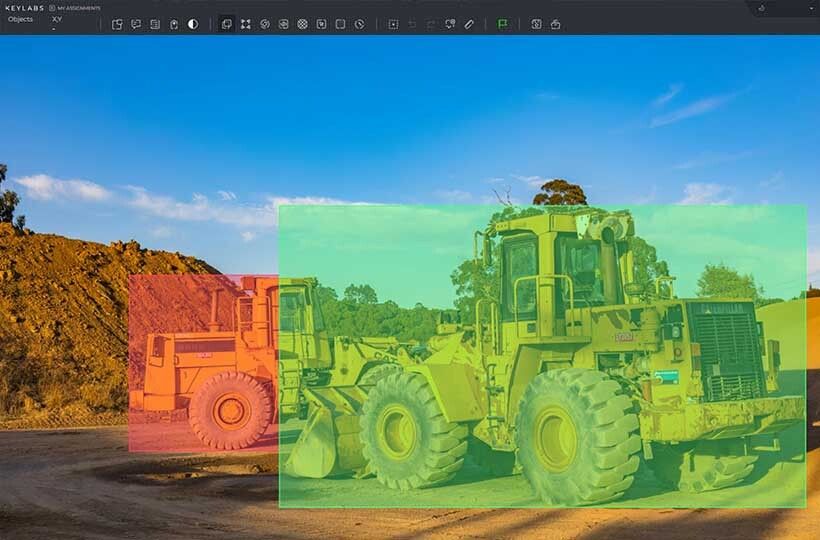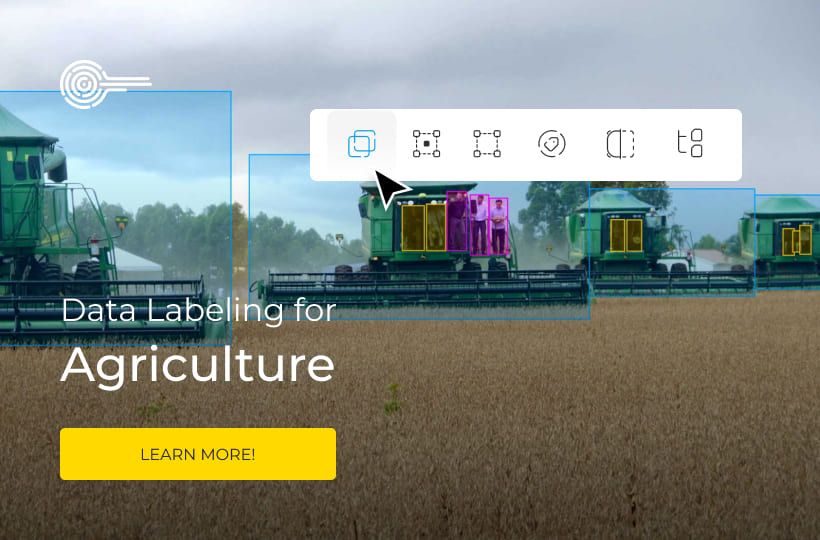Hybrid Neural-Symbolic AI for Business Logic Integration
Modern companies are increasingly faced with the need to combine intelligent algorithms with clearly defined business logic. Systems must not only analyze large volumes of data but also make decisions that are consistent with corporate rules, standards, and compliance requirements. This requires the integration of hybrid approaches that can combine the flexibility of machine learning with the formal structure of logical models. This approach provides greater accuracy, transparency, and adaptability in business processes, enabling companies to automate decision-making more effectively, reduce errors, and maintain control over system logic, even in scalable cloud environments.
Key Takeaways
- Blends data-driven learning with human-readable business rules.
- Enables transparent decision-making for compliance-sensitive industries.
- Overcomes limitations of single-paradigm systems through synergistic operation.
- Critical for enterprises needing adaptable yet governed operational frameworks.

Defining the Hybrid Paradigm
This approach combines the ability of models to learn from large amounts of unstructured data with the formal, interpreted logic of rules and knowledge. In business, this makes it possible to have a system that both "understands" texts, images, or logs and simultaneously applies clear corporate rules, compliance checks, or complex decision chains. This trend is now widely researched and used in enterprise projects due to the combination of knowledge, logic, and learning.
Architecturally, such solutions usually consist of three layers: the first layer - neural modules (LLM, CV modules, NER, classifiers), which extract entities, intents and vectors; the second - a component for storing and presenting knowledge (knowledge graph, semantic base, vector database) for context and long-term memory; the third - a symbolic layer (business logic rules, rule engine, logical inferior or planner), which accurately applies corporate rules and provides explanations for decisions. Between the layers are format translators: for example, converting extracted entities into triplets for the knowledge graph or into predicates for the rule engine.
Historical Context of Developments
The development has deep historical roots in attempts to combine rule-based AI and neural approaches, which had been developing separately for several decades. In the 1980s and 1990s, rule-based systems that employed symbolic reasoning to model expert knowledge and make decisions were dominant. They provided high interpretability, but had limitations in working with ambiguous or unstructured data.
At the same time, neural networks began to develop as an alternative paradigm, capable of detecting complex patterns in large data sets without predefined rules. However, such systems were "black boxes", and the lack of explainability limited their application in critical business processes.
Starting from the 2000s, researchers began to actively look for ways to combine rule-based AI with neural networks. With the advent of knowledge graphs and ontologies, it became possible to add structure and context to the machine learning process. In the 2010s, the development of deep learning and transformer models made this combination more natural: symbolic reasoning began to be used to explain, validate, or constrain decisions generated by neural systems.
Today, this direction has gained particular importance in corporate applications. Businesses seek to integrate the adaptability of neural models with the accuracy of rule-based AI, creating transparent decision-making systems that meet regulatory and compliance requirements. This combination of symbolic reasoning and neural networks enables the development of a new generation of intelligent systems - capable of learning, explaining their actions, and simultaneously maintaining controlled business logic.

Understanding neurosymbolic AI hybrid systems
Hybrid neurosymbolic systems integrate the capabilities of neural networks with the formal structure of rule-based AI and symbolic reasoning, thereby creating an approach that can simultaneously analyze data and apply clear, logical rules. In such systems, neural networks are responsible for processing unstructured data, extracting entities, classifying them, and making predictions. At the same time, the symbolic layer applies rules, performs logical inferences, and ensures the explainability of decisions.
This separation enables the resolution of the primary issues of traditional neural systems: it provides control over business logic, reduces the risk of erroneous conclusions, and makes the results more transparent for auditing. From an architectural point of view, hybrid systems typically consist of three components: a neural layer for extracting knowledge from data, a knowledge store (such as a knowledge graph or semantic base) for context, and a symbolic rule engine for making final decisions.
Integrating neural networks with symbolic reasoning is not a simple addition; translation mechanisms are needed to transform the results of neural models into predicates or triplets that rule-based AI can understand. Thanks to this approach, systems become more flexible and scalable, capable of handling complex corporate processes, automating decision-making, and ensuring a high level of compliance with business rules.
Benefits of Integrating Neural and Symbolic Approaches
- Increased explainability. Symbolic reasoning and rule-based AI enable you to accurately track which rules and logical conclusions led to a specific decision, making the system transparent for auditing purposes.
- Guaranteed compliance with business logic. Integrating rules into the decision-making process ensures that results are consistently aligned with corporate policies and regulatory requirements.
- Working with unstructured data. Neural networks can efficiently process texts, images, and event logs, extracting entities and intents for further processing by the symbolic layer.
- Error reduction. The combination of rules and neural models reduces the likelihood of "hallucinations" and false conclusions characteristic of purely neural systems.
- Adaptability and scalability. Neural networks provide training on large volumes of data, while symbolic reasoning allows you to quickly modify the rules without the need to retrain the models.
- Learning optimization. Part of the knowledge is already encoded in symbolic rules, so neural networks need fewer examples to perform tasks reliably.
- Support for complex business processes. Hybrid systems can integrate into multi-step workflows where both the flexibility of data analysis and the accuracy of rules are required simultaneously.
Key Concepts in Neural-Symbolic Integration
- Neural networks. Responsible for processing large amounts of unstructured data, extracting entities, classifying, and predicting. They enable the system to learn from examples and recognize patterns that are difficult to formalize using rules.
- Symbolic layer (Symbolic Reasoning / Rule-Based AI). Contains a set of formalized rules, logical predicates, and inferents that are used to make decisions and validate the results obtained by neural modules. Provides transparency and compliance with business logic.
- Knowledge representation. The use of knowledge graphs, ontologies, or semantic databases for the structured representation of information allows neural modules and the symbolic engine to work in harmony.
- Translation mechanisms. The process of converting the results of neural models into a form understandable by symbolic reasoning (for example, transforming entities into triplets or predicates).
- Retrieval-augmented workflows. Integrating vector databases or search engines to provide context and improve the accuracy of inferences from both the neural and symbolic layers.
- Explainability and audit trail. Tracking which neural and symbolic components influenced the final decision is essential for regulated business processes.
- Hybrid interaction. Combining the adaptability of neural networks and the accuracy of rule-based AI to create systems that can operate in complex enterprise environments and scalable cloud processes.
Interpretable Models vs. Black Boxes
Interpreted models are based on rule-based AI and symbolic reasoning, where each decision can be tracked, understood, and explained. Such models clearly show which rules and logical conclusions led to a specific result, making them indispensable in regulated business processes, compliance, and complex decision-making chains. The advantage of this approach is transparency and control over business logic, but the limitation is low flexibility when processing unstructured data or new scenarios.
"Black boxes" are models based on neural networks that can find complex patterns in large amounts of data, but it is practically impossible to trace how a specific result was obtained. They are highly effective in forecasting and classification, but the risk of "hallucinations" and opacity of decisions limits their application in business, where compliance with rules and regulations is critical.
The hybrid approach combines both paradigms: neural networks perform adaptive data processing, and symbolic reasoning imposes control and ensures explainability of decisions. This creates models that are simultaneously flexible, accurate, and transparent, providing a balance between performance and trust in a business environment.
Components of Symbolic Reasoning in AI
- Predicates and logical formulas. Basic units of knowledge representation that describe facts, properties of entities, and relationships between them.
- Rule engine. A system that applies defined rules to facts and draws logical conclusions. This is the core of rule-based AI, ensuring strict adherence to business logic.
- Knowledge base. A structured repository of facts, rules, and ontologies that allows the system to store and organize information for further processing.
- Inference engine. A mechanism for deriving new facts or decisions based on existing rules and data. It can operate on the principle of forward-chaining or backward-chaining.
- Verification and validation mechanisms. Ensure the correct application of regulations, consistency control, and prevention of logical conflicts in rule-based AI systems.
- Knowledge representation models. Knowledge graphs, ontologies, and RDF/OWL triplets enable a consistent description of relationships, making them understandable for both symbolic reasoning and integration with neural networks.
Summary
Hybrid combines the flexibility of neural networks with the accuracy and transparency of rule-based AI and symbolic reasoning. This approach enables systems to simultaneously process large amounts of unstructured data and apply formal rules to make informed decisions, ensuring compliance with both business logic and regulatory requirements.
The integration of these approaches provides advantages in explainability, accuracy, scalability, and reduced risk of errors, while maintaining adaptability and the ability to learn from new data. This makes hybrid neuro-symbolic systems especially valuable for corporate processes where transparency, control, and effective automated decision-making are essential.
FAQ
What is the primary goal of Hybrid Neural-Symbolic AI?
Hybrid Neural-Symbolic AI seeks to integrate neural networks with rule-based AI and symbolic reasoning to develop systems that can process complex data while adhering strictly to business rules and logic. This allows for both adaptability and explainability in decision-making.
What are the historical roots of Hybrid Neural-Symbolic AI?
It originated from attempts to bridge the gap between symbolic AI, which dominated expert systems in the 1980s and 1990s, and neural networks that could handle unstructured data. The convergence gained traction in the 2000s and 2010s, driven by advances in knowledge representation and deep learning.
What role do neural networks play in hybrid systems?
Neural networks handle unstructured data, extract entities, classify inputs, and predict outcomes. They provide adaptability and learning capabilities that symbolic reasoning alone cannot achieve.
What is the function of symbolic reasoning in hybrid AI?
Symbolic reasoning and rule-based AI enable the system to apply formal rules, make logical inferences, and maintain transparency. This layer validates and constrains decisions generated by neural networks.
How do hybrid systems integrate neural and symbolic components?
Integration relies on translation mechanisms that convert outputs from neural networks into a format compatible with symbolic reasoning, such as predicates or knowledge graph triples. This allows seamless cooperation between learning and rule-based layers.
What are the main benefits of combining neural networks with symbolic reasoning?
The hybrid approach improves explainability, ensures compliance with business logic, reduces errors, and allows scalable learning while maintaining transparency in decision-making processes.
What is the role of knowledge representation in hybrid systems?
Knowledge representation, including knowledge graphs and ontologies, structures information so that both neural networks and symbolic reasoning can access context and relationships between entities effectively.
Why are hybrid systems critical for business applications?
They enable automated decision-making in processes that require both adaptability and strict adherence to rules, such as compliance, finance, contracts, and complex workflows, ensuring both efficiency and control.
What is the difference between interpretable models and black-box models?
Interpretable models rely on rule-based AI and symbolic reasoning, providing a clear understanding of how decisions are made. Black-box models, based on neural networks, can learn complex patterns but lack transparency, which hybrid AI seeks to balance.
What challenges exist in implementing hybrid neural-symbolic systems?
Key challenges include synchronizing neural networks and symbolic layers, managing rule complexity, ensuring performance at scale, and maintaining auditability and transparency. Proper translation and integration mechanisms are crucial for addressing these issues.
